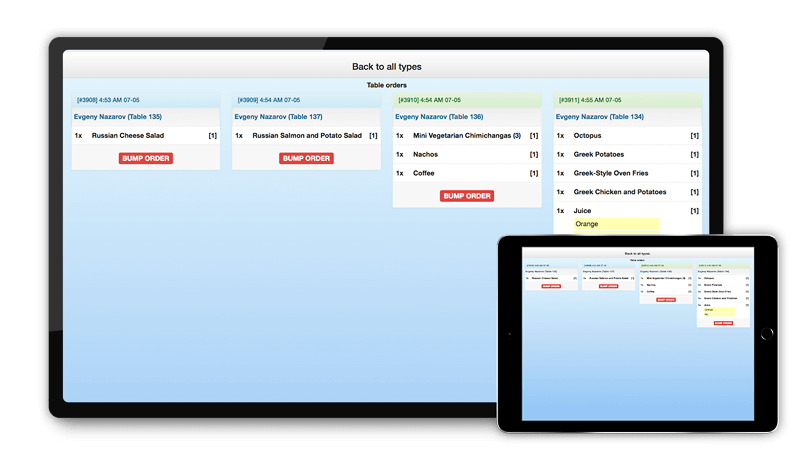In today’s fast-paced restaurant industry, providing excellent customer service is crucial to remaining competitive. One area where restaurants must excel is in efficiently handling payments. Modern consumers demand flexibility, whether it’s splitting bills or adding custom tips. To meet these demands, restaurant Point of Sale (POS) systems have evolved to offer comprehensive solutions. But can these systems handle the complexities of split bills and custom tipping without compromising efficiency? The short answer is yes. This article will explore how restaurant POS systems manage split bills and custom tipping, the benefits they provide, and the considerations restaurants should weigh when implementing these systems.
What is a Restaurant POS System?
A restaurant POS system is a digital solution that helps restaurants manage transactions, process payments, and often integrates with other business functions like inventory management, customer relationship management, and reporting. While the primary role of a POS system is to process sales, modern systems come equipped with a range of features that go far beyond that. With built-in tools for split payments, custom tipping, and other specialized needs, these systems are tailored to enhance customer satisfaction and streamline restaurant operations.
Split Bills: A Growing Consumer Demand
In an era where group dining is common—whether it’s families, friends, or business colleagues—split bills are a frequent request. For a restaurant, manually calculating and processing split bills can be time-consuming and error-prone. This is where modern POS systems come into play.
How POS Systems Handle Split Bills
Most advanced restaurant POS systems can handle split bills seamlessly. Here’s how they typically work:
- Split by Amount or Item: POS systems allow diners to split the bill in several ways. They can split the total amount evenly between guests or assign specific items to each person. This feature is particularly useful for groups where some people may order more expensive items, such as steak or premium drinks, while others opt for lighter meals.
- Multiple Payment Methods: Customers may want to pay using different methods—some may use cash, others a credit card, and others still may want to use mobile payment options like Apple Pay or Google Wallet. A robust POS system can handle multiple payment types in a single transaction, making the process smooth for both customers and servers.
- Split During or After the Order: Flexibility is key. Many POS systems allow for splitting the bill either during the order-taking process or after the meal is complete. This means that even if diners change their mind about splitting the bill after ordering, servers can accommodate their request easily.
- Customizable Splits: For groups that want to split a bill unevenly (perhaps someone wants to pay 70% of the bill and the other person 30%), POS systems allow for custom splits. This level of customization helps ensure that each diner only pays for what they ordered or agreed to cover.
Benefits of Split Bill Functionality
- Increased Customer Satisfaction: Offering customers the flexibility to split the bill in any way they choose ensures a better dining experience. No one feels awkward asking for separate bills, and the process is streamlined, making it quicker for the restaurant to process.
- Efficiency: Manually calculating splits takes time, and mistakes are easy to make. With a POS system, the entire process is automated, reducing errors and freeing up staff to attend to other duties.
- Reduced Wait Times: During busy shifts, servers don’t have to spend extra time calculating split bills or worrying about whether they’ve made a mistake. This decreases wait times for other customers and improves overall table turnover, maximizing a restaurant’s revenue potential.
Custom Tipping: An Essential for Service-Oriented Restaurants
Tipping is an integral part of the dining experience, particularly in North America, where tips can make up a significant portion of a server’s income. For many customers, being able to add a custom tip amount, rather than simply choosing a preset percentage, is an important feature. POS systems have adapted to accommodate both.
How POS Systems Handle Custom Tipping
Restaurant POS systems generally provide multiple options for tipping. Here’s a breakdown of how they manage tips:
- Preset Tip Options: Many POS systems offer preset tip amounts—often 10%, 15%, 20%, and 25%—to make the process quicker for customers. This is especially useful in fast-paced environments where diners might appreciate the convenience of choosing a pre-calculated amount.
- Custom Tip Entry: For those who prefer to tip a specific amount, most POS systems allow custom tip entry. Customers can type in any dollar or percentage amount they choose, whether they’re rounding up to the nearest dollar or giving a larger tip in recognition of exceptional service.
- Tip Adjustments: Some systems allow for tip adjustments after the payment has been made. This feature can be useful in situations where diners might forget to add a tip initially but want to reward their server later.
- Cash and Card Tips: POS systems also allow for both cash and card tips. For card transactions, the system can automatically calculate the total bill, including the tip, once the customer has entered their preferred amount.
Custom Tipping for Different Payment Types
Another critical feature is the ability to handle custom tips across different payment methods. Whether the customer pays with a credit card, debit card, or mobile payment service, modern POS systems ensure that tipping is handled appropriately. This is particularly important as the industry sees a growing shift towards cashless transactions.
- Credit Card and Debit Card Tips: With card payments, diners can enter a custom tip amount directly into the system after swiping or tapping their card. The POS system then adds the tip to the total and processes the transaction.
- Mobile Payments: As contactless and mobile payments grow in popularity, many POS systems now support custom tipping through mobile apps like Apple Pay, Google Pay, or even dedicated restaurant apps.
- Cash Tips: While the trend is moving toward card-based payments, cash tips are still common. POS systems make it easy for servers to record cash tips accurately, ensuring proper accounting and tracking.
Benefits of Custom Tipping
- Improved Customer Experience: Allowing customers to leave a custom tip lets them express appreciation in the way they see fit. Preset percentages can sometimes feel limiting, so offering flexibility enhances the overall dining experience.
- Accurate Reporting and Distribution: POS systems help restaurants keep track of tips accurately. This is crucial for end-of-day reporting, distributing tips among staff, and ensuring tax compliance. By automating tip calculations and recording, restaurants avoid potential disputes and ensure that staff is properly compensated.
- Transparency: With a POS system, both the customer and the restaurant have a clear record of the tip amount. This transparency helps avoid misunderstandings and errors, which can be especially important in busy establishments where things can get hectic.
Challenges and Considerations
While restaurant POS systems have made split bills and custom tipping easier, they are not without their challenges. Here are some factors restaurants should consider when implementing or upgrading their POS systems.
Cost
Modern POS systems with advanced features come at a cost. Monthly subscription fees, transaction fees, and hardware expenses can add up, particularly for smaller restaurants. However, the investment can pay off in terms of improved efficiency, customer satisfaction, and error reduction.
Staff Training
Even the best POS system won’t deliver optimal results if staff members aren’t properly trained. Restaurant employees need to know how to use all the features, especially split billing and custom tipping, without causing delays or confusion. Restaurants should invest in training programs to ensure their staff can fully leverage the capabilities of the POS system.
Integration with Other Systems
Many restaurants use multiple software systems for functions like accounting, inventory management, and customer relationship management. It’s important to choose a POS system that integrates seamlessly with these other platforms. This helps ensure smooth operations and reduces the need for manual data entry, which can be prone to errors.
Customer Preferences
While advanced POS systems offer many features, not all customers may be comfortable with technology. Some diners might prefer simpler, traditional payment methods. Restaurants need to strike a balance between offering high-tech solutions and maintaining flexibility for customers who prefer a more straightforward experience.
Conclusion
In today’s competitive restaurant industry, offering flexible payment options like split bills and custom tipping can greatly enhance the customer experience. Modern restaurant POS systems are equipped to handle these tasks with ease, providing both customers and staff with a seamless and efficient process. By automating split payments and tipping, POS systems save time, reduce errors, and improve overall satisfaction.
However, restaurants should consider factors such as cost, staff training, and integration with other systems when choosing a POS solution. By investing in the right POS system, restaurants can not only meet current customer demands but also position themselves for future growth. With the ability to handle split bills and custom tipping, POS systems empower restaurants to deliver superior service, streamline operations, and enhance profitability in an increasingly digital world.




